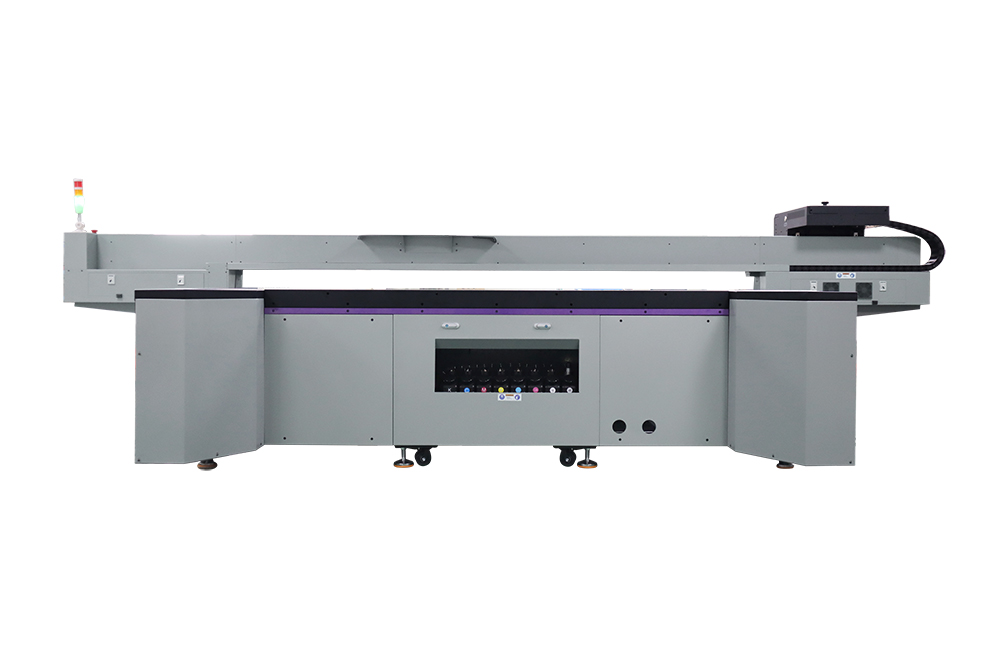How to Optimize Your UV Flatbed Printer for High-Volume Printing
In the realm of digital printing, UV flatbed printers have revolutionized the way we approach high-quality, large-format printing. Their versatility, precision, and ability to print on a wide range of materials make them indispensable for businesses ranging from signage and graphics to industrial manufacturing. However, when it comes to high-volume printing, optimizing your UV flatbed printer is crucial to ensure efficiency, maintain print quality, and minimize downtime. Here’s a comprehensive guide to help you get the most out of your UV flatbed printer for high-volume printing tasks.

1. Understanding Your Printer’s Capabilities
Before diving into optimization, it’s essential to have a thorough understanding of your UV flatbed printer’s specifications and capabilities. This includes knowing its maximum print speed, resolution, supported media types, ink types, and the maintenance requirements. Most UV flatbed printers come with user manuals that detail these aspects. Take the time to read through them and familiarize yourself with your printer’s strengths and limitations.
2. Calibrating for Consistency
Consistency is key in high-volume printing. Regular calibration of your printer ensures that colors remain accurate and prints are uniform across different jobs. Calibrate the printer heads, platens, and media feeders to ensure precise alignment and ink deposition. Many UV flatbed printers offer automated calibration features, but manual calibration may be necessary for fine-tuning.
3. Optimizing Print Settings
The print settings you choose can significantly impact both the quality and speed of your prints. Here are some key settings to consider:
Resolution: While higher resolution (DPI) offers better print quality, it also slows down the printing process. For high-volume printing, find a balance that meets your quality requirements without sacrificing speed.
Ink Coverage: Adjusting ink coverage can help manage ink consumption and drying times. Lighter ink coverage may be sufficient for certain types of prints, reducing ink usage and speeding up drying.
Print Mode: Most UV flatbed printers offer different print modes such as draft, standard, and high-quality. Choose the appropriate mode based on the job requirements. For high-volume printing, a standard mode often provides a good compromise between quality and speed.
Pass Count: The number of passes the print head makes over the media can affect both quality and speed. Reducing the pass count can increase speed but may slightly compromise quality. Experiment to find the optimal setting for your needs.
4. Efficient Media Handling
High-volume printing often involves handling a variety of media sizes and types. Ensure that your printer’s media feeders, rollers, and platens are clean and free of debris to avoid misfeeds and jams. Consider using media with consistent thickness and quality to maintain print consistency. If possible, invest in automated media loading and unloading systems to streamline the process and reduce manual intervention.
5. Ink Management
Ink is a critical component in UV flatbed printing, and efficient ink management can significantly impact your printing costs and productivity. Here are some tips:
Ink Type: Use high-quality UV-curable inks that are compatible with your printer. Inferior inks can lead to poor print quality and increased maintenance needs.
Ink Levels: Regularly monitor ink levels and replace cartridges promptly to avoid interruptions during high-volume printing. Some printers offer ink level monitoring systems that alert you when ink is low.
Ink Savings Modes: Utilize ink-saving modes or features that optimize ink usage without compromising print quality. This can include adjusting ink density and using spot colors instead of process colors when appropriate.
6. Maintaining Optimal Print Head Health
The print head is the heart of your UV flatbed printer, and its health directly impacts print quality. Regularly clean and maintain the print head to prevent clogs and ensure consistent ink flow. Most printers offer automated cleaning cycles, but manual cleaning may be necessary for stubborn clogs. Additionally, avoid leaving the printer idle for long periods, as this can lead to ink drying in the nozzles.
7. Drying and Curing
UV-curable inks require proper drying and curing to achieve optimal durability and adhesion. Ensure that your printer’s UV lamps are functioning correctly and that the curing process is adequately set for the type of media and ink being used. Inadequate curing can lead to poor print durability and smudging, while over-curing can damage the media or cause ink to crack.
8. Software Optimization
The software driving your UV flatbed printer plays a crucial role in efficiency and productivity. Ensure that your RIP (Raster Image Processor) software is up-to-date and optimized for high-volume printing. Look for features such as batch processing, automated workflow tools, and color management capabilities. A well-optimized RIP can significantly reduce processing time and improve print quality.
9. Regular Maintenance
Regular maintenance is essential to keep your UV flatbed printer running smoothly and to prevent costly downtime. Establish a maintenance schedule that includes tasks such as cleaning the printer heads, inspecting media feeders, checking UV lamps, and lubricating moving parts. Adhering to a maintenance schedule can help identify potential issues before they become major problems.
10. Monitoring and Analytics
Utilize printing analytics and monitoring tools to track printer performance, identify bottlenecks, and optimize workflows. Many modern UV flatbed printers come with built-in diagnostic tools that provide insights into print times, ink usage, and error rates. Use this data to make informed decisions and continuously improve your printing processes.
Conclusion
Optimizing your UV flatbed printer for high-volume printing requires a combination of understanding your printer’s capabilities, calibrating for consistency, adjusting print settings, efficient media handling, ink management, maintaining print head health, proper drying and curing, software optimization, regular maintenance, and monitoring. By following these guidelines, you can ensure that your UV flatbed printer operates at peak efficiency, delivering high-quality prints while minimizing downtime and costs. Whether you’re printing signage, graphics, or industrial parts, a well-optimized UV flatbed printer can be a powerful asset for your business.
